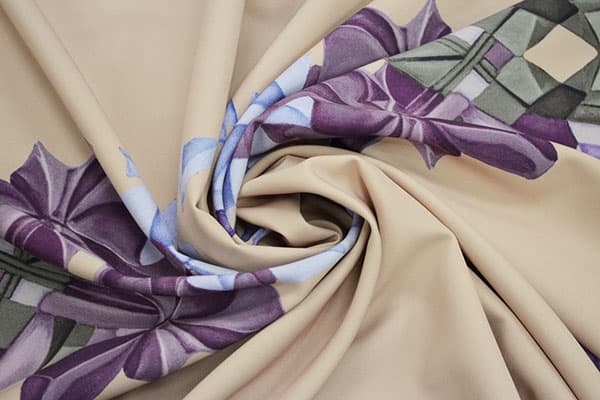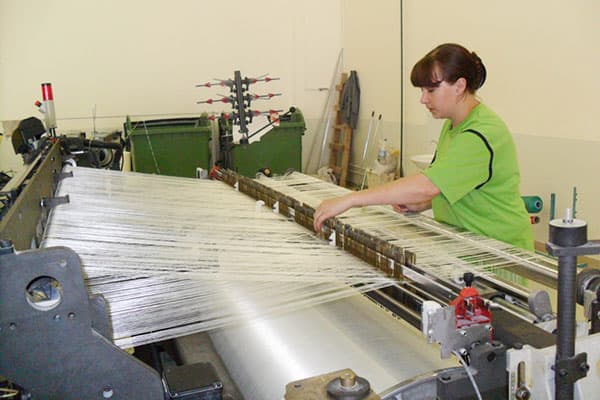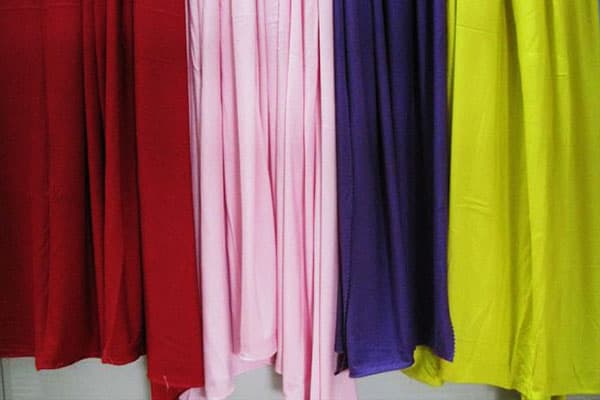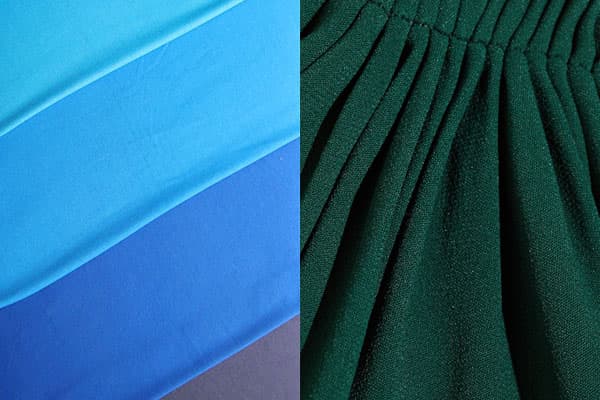8 types of viscose and the properties of each
Content:
Seeing Viscosa on the label, many are confused. Viscose is an ambiguous material: some consider it to be synthetics, others refer to natural fabrics. But the truth is in the middle. Its processing method is chemical, and the basis is wood pulp. Material properties are also very variable. It can be very fragile, strong, stretch and not, resembling cotton, silk, linen, even wool. It all depends on additives, modifications and, accordingly, the type of viscose.
Is viscose a synthetic or natural fabric?
Depending on the type of raw material, fabrics are distinguished:
- natural vegetable - cotton, hemp, flax;
- natural animals - silk, wool;
- natural minerals - awn, asbestos;
- chemical artificial - viscose, lurex, acetate;
- chemical synthetic - polyesters, polyamide, polypropylene.
As you can see, viscose belongs to the category of artificial fabrics, but this is not the same as synthetics. Artificial materials are made from natural organic and inorganic substances, mainly cellulose, less often glass, metal. Synthetic are products of oil refining and subsequent synthesis of the resulting substances.
How to get viscose?
The prospect of creating artificial fiber from wood has occupied the minds of scientists for a very long time, over 2 centuries. With the discovery of cellulose in 1838 by A. Payen, it became more real than ever. The fibrous substance obtained by treating wood with nitric acid had characteristics similar to cotton fiber. It remained to find a way to dissolve it and pull it into threads.
The next impetus in the invention of viscose was given by the development of J. Mercer (1844 g), who described the process of regeneration of cellulose from a concentrated copper-ammonia solution with the addition of acid. However, the method found industrial application only in 1857 thanks to E. Schweitzer. Further, M. Kramer, I. Schlossberger were engaged in its development. Finally, in 1892, British scientists Bevin, Cross and Beadle found a way to produce viscose fiber. This happened in several stages:
- wood crushing;
- boiling in an alkaline solution;
- squeezing the mass; take the smallest holes into the container with acid;
- finish;
- drying.
Today, viscose is obtained in the same way as 100 years ago. Differences can only be found in modernized production and new technical equipment.
Properties of viscose, stretches or not
Viscose comes from the word viscosus, which means viscous. So called not only the fabric, but also the solution itself, from which it is obtained (it resembles a honey-colored gel, stretches well). It is noteworthy that cellophane is made from the same solution, but they do not use point holes for drawing threads, but cuts to obtain a single web. Many people mistakenly associate cellophane with bags, but more often it can be found in the form of sausage packaging. It, like viscose fabric, is vapor and moisture permeable.
What are the properties of viscose (clothing made of this material)?
- High hygroscopicity (absorbs moisture better than cotton).
- Softness and hygiene.
- Aesthetic and diverse appearance.
- Good ink sensitivity, brightness and color fastness.
- Antistatic (not electrified).
- Breathability.
- High creasing.
- Low strength, especially when wet.
- Average wear resistance.
- Tendency to deformation during washing (stretches, shrinks up to 10%, rolls).
- Inelasticity (100% viscose does not stretch).
—
Viscose is found not only in clothing.A high-strength thread is produced from the material - cordon, which is then used to produce technical products. Also, various household rags and sponges, staple fiber for carpets, warm clothes, faux fur are made from it.
Often elastane, spandex or polyester is added to viscose. Then the thing stretches well and sits on the figure.
Varieties
Before making a conclusion about viscose, it is worth mentioning a very important point. The material has a lot of guises. Even fabrics marked “100% viscose” are different.
So, there are 8 main types of viscose fabric:
- Modal. This fabric consists entirely of wood pulp and is endowed with the properties of cotton: hygroscopic, durable, wear-resistant.
- Tensel. It was first made in the USA. As a basis, cellulose of eucalyptus trees is used. The material from it is silky and very soft. It absorbs moisture well, breathable, durable, but prone to deformation.
- Cupra. Appearance practically does not differ from natural silk. The dome fabric is durable, has the ability to thermoregulate, allows air to pass through, but delicate care is needed.
- Acetate (acetate silk). Pulp waste is used for production. The fabric turns out to be shiny, thin, elastic, holds its shape well, does not wrinkle, and is resistant to bacteria and fungus. But at the same time, it does not allow air and moisture to pass through, is electrified, deteriorates from alkalis, and dissolves from acetone.
- Siblon. Advanced viscose high modulus fiber. Such viscose is less prone to shrinkage, does not lose strength when wet, more elastic.
- Staple. It is a mixture of cotton and viscose. This combination increases the environmental friendliness of the fabric. Disadvantages - wrinkles and shrinks when washing.
- District (rayon). Another type of "artificial silk". The fabric dries quickly, resistant to deformation and wear.
- Lyocell (lyocell). Unlike ordinary viscose, this material is obtained from cellulose in an environmentally friendly way. It is durable, does not slip, does not change shape after washing, stretches, hygroscopic.
Viscose can be determined by a variety of bright colors, sometimes by the beautiful sheen of the fabric. As a rule, at the same time she wrinkles, and the body in her “breathes”. If you cut and set fire to a piece of such fabric, it will exude a characteristic smell of paper and leave ash.
In conclusion, we note: it is wrong to say that viscose is a synthetics. However, this is not natural fabric. It is an organic material obtained artificially. In fact, viscose is on the border. You can’t say exactly how she will behave in clothes, for the sake of completeness, you need to look at the entire composition of the fabric. Various impurities are almost always added to viscose, and this makes its properties change greatly.



